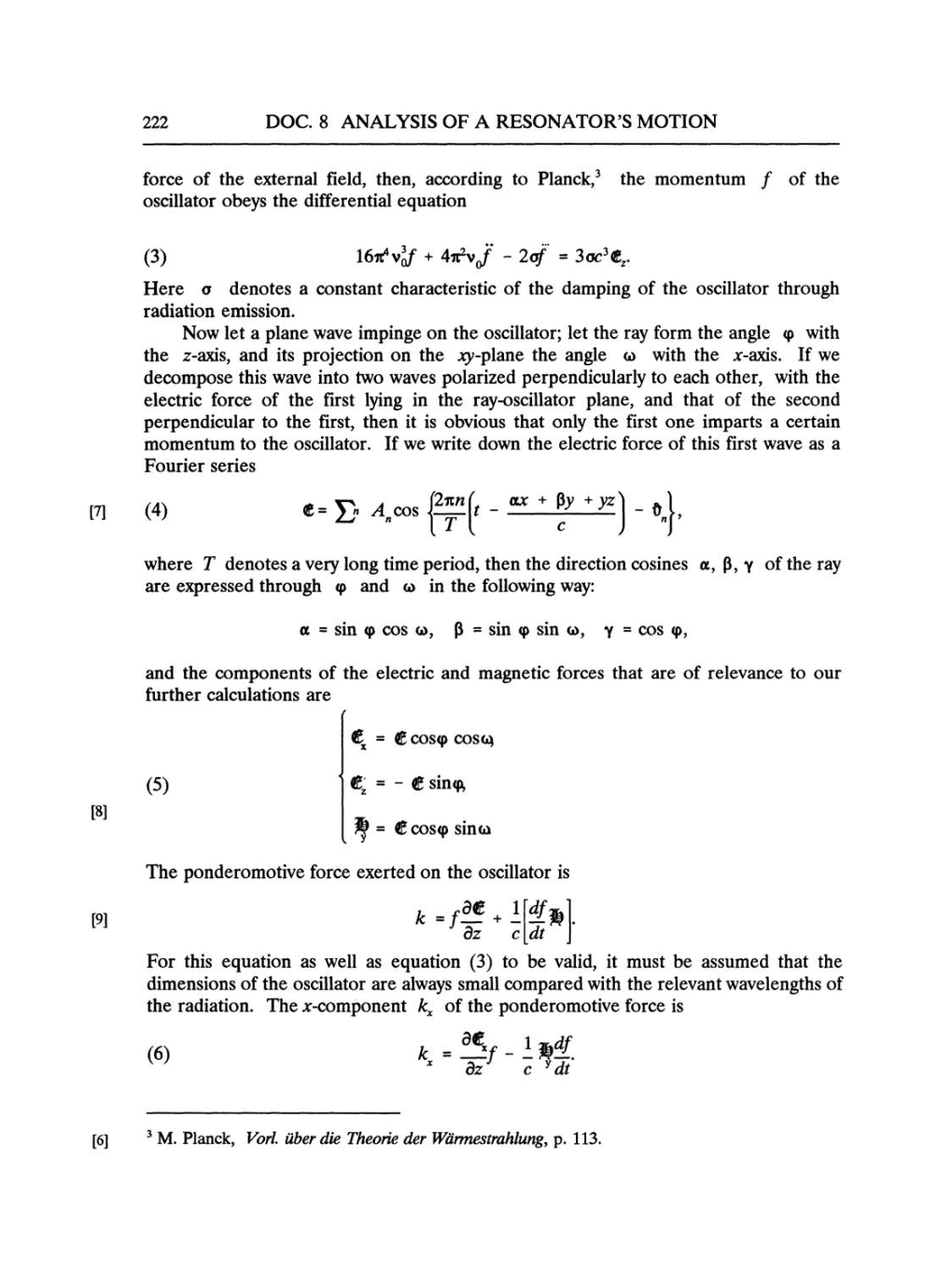222
DOC.
8
ANALYSIS OF A RESONATOR'S MOTION
force
of the external
field, then,
according
to
Planck,3
the
momentum
f
of the
oscillator
obeys
the differential
equation
16h4
+
4ifvj
-
2
of
=
3oc3Cz.
(3)
Here
a
denotes
a
constant
characteristic of the
damping
of the oscillator
through
radiation
emission.
Now
let
a plane wave impinge on
the
oscillator;
let the
ray
form the
angle p
with
the
z-axis,
and its
projection
on
the
xy-plane
the
angle w
with
the
x-axis.
If
we
decompose
this
wave
into two
waves polarized perpendicularly
to
each
other,
with
the
electric force of the
first
lying
in
the
ray-oscillator
plane,
and
that of the
second
perpendicular
to
the
first,
then
it
is
obvious
that
only
the
first
one imparts
a
certain
momentum to
the
oscillator.
If
we
write down
the electric
force
of
this first
wave
as
a
Fourier
series
[7]
[8]
[9]
(4)
c=
/4bcos
2
nn
T~
t
_
ax +
ßy
+
yz
where
T
denotes
a
very long
time
period,
then the direction
cosines
a,
ß,
y
of
the
ray
are
expressed through
p
and
a
in
the
following
way:
a
=
sin
p
cos w, ß
=
sin
p
sin
g,
y
=
cos
p,
and
the
components
of the
electric and
magnetic
forces
that
are
of
relevance to
our
further
calculations
are
(5)
€
=
C
cosp
cos4
€ '--€ sint
e
cosqj
sin(a
The
ponderomotive
force
exerted
on
the oscillator
is
k
=
f-
+
- dz
c
d^
dt
For
this
equation as
well
as equation
(3)
to be
valid,
it
must be
assumed that the
dimensions of the
oscillator
are
always
small
compared
with
the relevant
wavelengths
of
the radiation.
The
x-component
kx
of the
ponderomotive
force
is
(6)
* Sz
!5
f
-1
*£
dt
[6]
3
M.
Planck,
Vorl.
über
die
Theorie der
Wärmestrahlung, p.
113.
